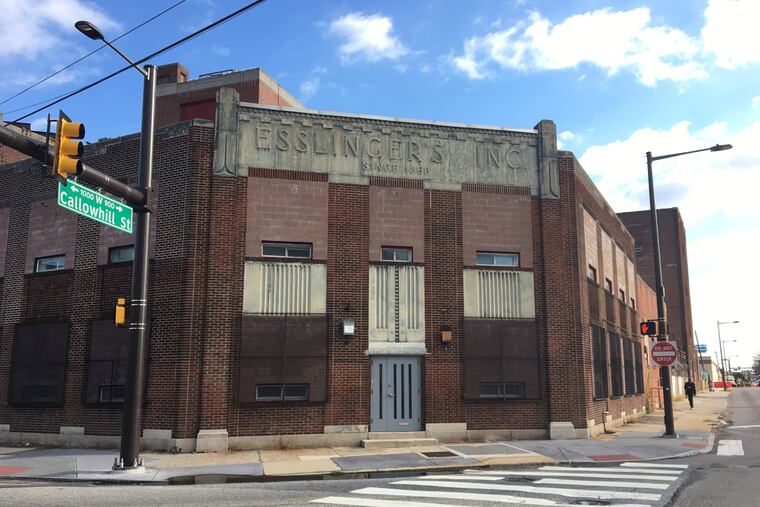Good Eye: From beer suds to soap suds, this modernist factory building stays busy
We keep hearing about how America doesn't make anything anymore, yet a low-slung modernist factory has been chugging along a mere two blocks north of Philadelphia's downtown for more than 70 years. Today, its assembly lines turn out a variety of industrial cleaners for National Chemical Laboratories. But when the plant at 10th and Callowhill opened in 1935, the liquid that coursed through its network of pipes was beer.

We keep hearing about how America doesn't make anything anymore, yet a low-slung modernist factory has been chugging along a mere two blocks north of Philadelphia's downtown for more than 70 years. Today, its assembly lines turn out a variety of industrial cleaners for National Chemical Laboratories. But when the plant at 10th and Callowhill opened in 1935, the liquid that coursed through its network of pipes was beer.
This rare modernist brewery was designed for Esslinger, one of the few Philadelphia beer makers to survive Prohibition. When repeal came in 1933, allowing alcohol to be sold again, the company wasted no time in dusting off the big fermentation tanks in its Victorian-era brew house, a tall redbrick structure crowned with a fancy pediment. But it quickly became clear Esslinger would need a different kind of building to compete.
Before America banned alcohol sales in 1920, most beer was produced for draft and packed in wooden barrels that were typically stacked in multistory, ice-cooled warehouses. By the time Prohibition ended, new technology allowed beer makers to put their product directly into individual, vacuum-sealed bottles and cans, eliminating the need for refrigeration.
Esslinger became the first Philadelphia brewery to switch from draft to cans, according to brewery historian Richard Wagner. To accommodate the long assembly lines the new process required, the company asked builder William F. Koelle & Co. to design a horizontal building. Because the site has a toehold on Ridge Avenue, then a major commercial street, as well as frontages on 10th and Callowhill Streets, Koelle cleverly arranged the two-story, brick structure for maximum visibility.
Esslinger's "Plant No. 1" wraps around the tall Victorian brew house, creating two long frontages with large windows that bring natural light to the factory floor. The Ridge Avenue facade is the main entrance, and Koelle signals its importance with strong architectural details, including flat, columnlike pilasters that terminate in stylized finials, and scored deco panels. Esslinger's name is proudly engraved at the top.
Functional and stylish, Koelle's design takes its inspiration from the factory aesthetic championed by Europe's Bauhaus architects. The sleek lines mark a shift from the architecture of the city's 19th-century breweries, with their thick arches and elaborate brickwork.
Perhaps Esslinger hoped a modern building would save the company. Its competitor, Ortlieb, had a similar idea when it hired Koelle to design a bottling plant in Northern Liberties in 1948. But consolidation in the beer industry was relentless, and Esslinger went out of business in 1964. A year later, National Chemical bought the building and started bottling cleaning supplies. The factory remains one of the last industrial relics in a rapidly changing neighborhood. Across the street, the city has just begun work to turn the Reading Viaduct into a park to serve the growing residential population.
215-854-2213
@ingasaffron